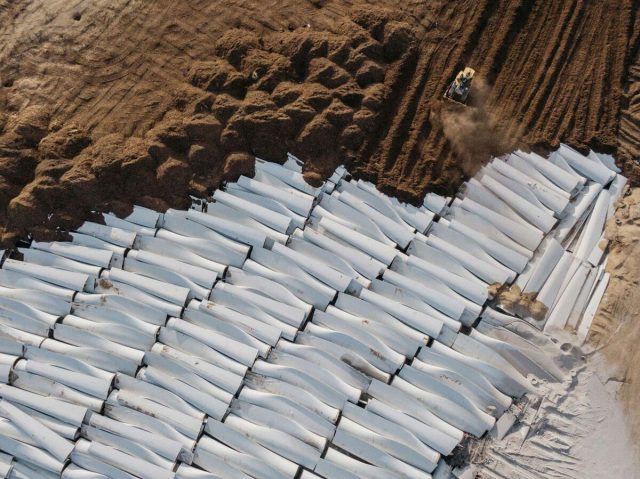Companies are searching for ways to deal with the tens of thousands of blades that have reached the end of their lives.
A wind turbine’s blades can be longer than a Boeing 747 wing, so at the end of their lifespan they can’t just be hauled away. First, you need to saw through the lissome fiberglass using a diamond-encrusted industrial saw to create three pieces small enough to be strapped to a tractor-trailer.
Tens of thousands of aging blades are coming down from steel towers around the world and most have nowhere to go but landfills. In the U.S. alone, about 8,000 will be removed in each of the next four years.
Wind turbines harness the kinetic energy of wind and convert it into mechanical energy to generate electricity. Electricity generated in this way is self-replenishing and produces no emissions harmful to our earth’s atmosphere, which is why it’s considered a form of renewable energy.
But for a form of energy to be considered truly ‘green’ – where it has a zero or less-than-zero impact on the environment across its lifespan in terms of waste and emissions – it’s important to also consider its end-of-life environmental impact.
Could wind turbines become 100% sustainable?
For wind turbines to be considered totally sustainable they must be built from 100% recyclable products. That’s why engineers across the world are now focusing efforts on designs that use materials such as thermoplastics that are biodegradable, or that can be reconstituted at the end of their lives.
Needless to say, even in their current form, the positive environmental impact of wind turbines far outweighs the negative, in terms of the critical role they play in reaching a net zero future.















